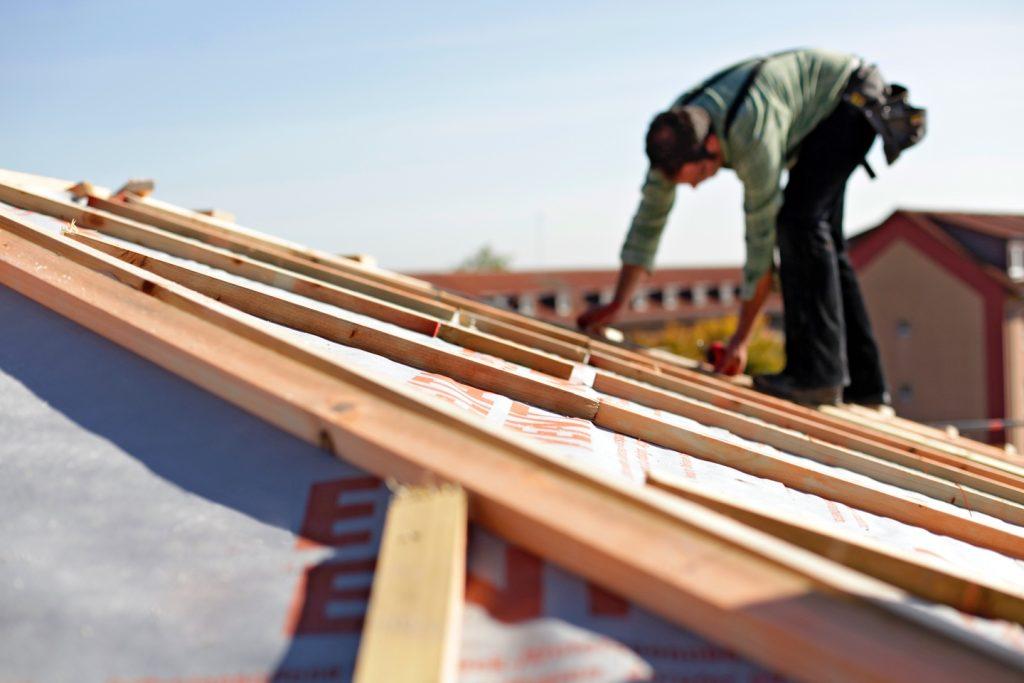The prospect of a new roof for your home is an exciting one. It not only enhances your property’s curb appeal but also ensures the safety and protection of your house. However, many homeowners wonder, “How long does it take to install a new roof?” In this article, we’ll explore the various factors that influence the timeline for a roof installation.

Understanding the Roof Installation Process
Before we dive into the time it takes to install a new roof, it’s important to have a basic understanding of the roof installation process. Roof installation typically involves the following key steps:
- Roof Inspection: The process begins with a comprehensive roof inspection. This step helps assess the existing condition of the roof, identify any damage, and determine the necessary repairs.
- Tear-Off: In many cases, the existing roofing material must be removed before the installation of the new roof. This is known as the tear-off process and involves stripping the old shingles or roofing material down to the roof deck.
- Repairs: If any damage or issues are discovered during the inspection or tear-off process, they need to be addressed. This includes fixing the roof deck, replacing damaged underlayment, and ensuring the integrity of the roof’s structure.
- New Roof Installation: Once the repairs are complete, the new roofing material is installed. This includes the underlayment, shingles or other roofing material, flashing, and ventilation components.
- Cleanup: After the new roof is in place, a thorough cleanup is conducted to remove debris, nails, and remnants from the old roof.
- Inspection and Quality Check: A final inspection is carried out to ensure that the new roof meets quality standards and specifications.
Factors Influencing the Installation Time
Several factors influence the time it takes to install a new roof:
- Roof Size: The size of the roof is one of the most significant factors. Larger roofs naturally require more time to install than smaller ones.
- Roof Complexity: The complexity of the roof, including its pitch, the number of valleys, the presence of dormers or other architectural features, and the need for special installations like skylights or chimneys, can affect the time required.
- Weather Conditions: Weather plays a critical role in roof installation. Inclement weather, such as rain or high winds, can delay the project. Roofing is typically not done in wet or windy conditions for safety and quality reasons.
- Roofing Material: The type of roofing material chosen for your new roof also impacts the installation time. For instance, asphalt shingles are relatively quick to install, while materials like slate or clay tiles require more time and care.
- Tear-Off or Overlay: Whether or not the old roofing material needs to be torn off before installing the new roof can affect the project’s timeline. An overlay, where the new material is installed directly over the old, is generally quicker.
- Crew Size: The size and efficiency of the roofing crew can influence the time needed. Larger crews can complete the work more quickly.
Average Timeframes for Roof Installation
On average, a roof installation project can take anywhere from a few days to a couple of weeks. Here are some general timeframes based on common factors:
- Small, Simple Roofs: A small, uncomplicated roof with a straightforward design can often be completed in a few days.
- Medium-Sized Roofs: For an average-sized home with a moderately complex roof, the project might take one to two weeks.
- Large, Complex Roofs: Homes with large, intricate roof designs can take several weeks to complete.
- Unforeseen Issues: If the inspection reveals significant damage or issues that were not initially apparent, the project timeline can be extended.
Conclusion
The time it takes to install a new roof varies depending on factors such as roof size, complexity, weather conditions, roofing material, tear-off or overlay, and crew size. While it’s essential to have an estimate from your roofing contractor, quality workmanship should be prioritized over speed. A well-installed roof is a valuable, long-term investment in your home’s protection and value, worth the time for proper installation.



Leave a Reply